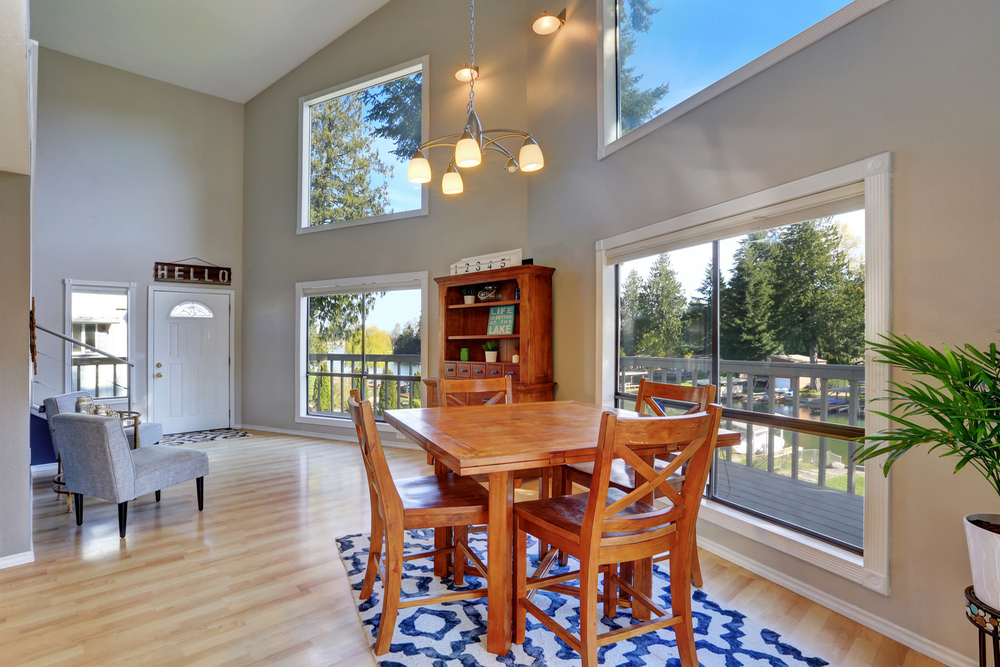
Are your windows costing you money? It might sound surprising, but outdated or inefficient windows are often silent culprits behind skyrocketing utility bills. They’re essentially energy leaks, allowing your carefully controlled indoor climate to escape, forcing your heating and cooling systems to work overtime. This blog post will explore how upgrading to energy-efficient windows can significantly reduce your utility bills, enhance your home’s comfort, and even boost its value.
The Problem: How Standard Windows Waste Energy
To understand the solution, let’s first look at the problem. Standard, single-pane windows, or even older double-pane units, are notorious for their energy inefficiency. They facilitate heat transfer through several mechanisms:
Conduction:
Heat easily passes directly through the glass and frame materials. In winter, warmth escapes; in summer, outdoor heat penetrates your home.
Convection:
Tiny gaps around the window frame, worn-out seals, and poor installation create drafts. This allows conditioned air to leak out and unconditioned air to seep in, leading to uncomfortable temperature fluctuations.
Radiation:
Solar radiation can directly enter your home through the glass, causing significant heat gain in the summer. Conversely, in winter, the heat from inside your home can radiate out through the glass.
The impact on your utility bills is direct and substantial. You’ll notice higher heating costs in winter as your furnace struggles to maintain a comfortable temperature, and soaring cooling costs in summer as your air conditioner works harder to combat heat infiltration. Beyond the financial drain, these inefficient windows also contribute to discomfort, often leading to cold spots near windows, excessive condensation, and even increased noise pollution from outside.
The Solution: What Makes Windows Energy-Efficient?
Energy-efficient windows are engineered to minimize heat transfer and air leakage, creating a more stable and comfortable indoor environment. Here’s what makes them so effective:
Glazing Technologies:
Double-pane vs. Triple-pane:
Modern energy-efficient windows typically feature at least two panes of glass, creating an insulating air space. Triple-pane windows offer even greater insulation.
Low-emissivity (Low-E) coatings:
These microscopic, transparent metallic layers are applied to the glass surface. They reflect radiant heat, keeping heat inside during winter and outside during summer, without significantly impacting visible light.
Argon/Krypton gas fills:
The space between the glass panes is often filled with inert gases like argon or krypton. These gases are denser than air, further reducing heat transfer through convection and conduction.
Frame Materials:
The frame also plays a crucial role in insulation.
Vinyl:
A popular choice for its durability, low maintenance, and excellent insulation properties.
Fiberglass:
Known for its strength, stability, and superior thermal performance, fiberglass frames are highly resistant to warping and rotting.
Wood:
A natural insulator, wood frames offer classic aesthetic appeal but require more maintenance.
Aluminum:
While durable, aluminum is a poor insulator on its own. Energy-efficient aluminum frames often incorporate “thermal breaks” to reduce heat transfer.
Spacers and Seals:
Warm-edge spacers:
These separate the glass panes and are designed to reduce heat transfer at the edge of the glass, minimizing condensation.
Air-tight seals and weatherstripping:
High-quality seals and weatherstripping around the frame prevent air infiltration, eliminating drafts and further enhancing energy savings.
Key Benefits Beyond Lower Bills
While reducing utility costs is a primary motivator for a window replacement, the benefits extend far beyond your wallet:
Enhanced Comfort:
Say goodbye to chilly drafts and hot spots. Energy-efficient windows help maintain consistent indoor temperatures throughout your home, making every room more comfortable.
Noise Reduction:
The multiple panes of glass and gas fills also act as excellent sound barriers, significantly reducing outside noise, which is especially beneficial if you live in a busy area like downtown Calgary, Alberta.
UV Protection:
Low-E coatings block harmful ultraviolet (UV) rays, protecting your furniture, flooring, and artwork from fading and sun damage.
Increased Home Value:
A professional window replacement with energy-efficient units is a significant upgrade that enhances your home’s curb appeal and can be a strong selling point, offering a good return on investment.
Environmental Impact:
By reducing your energy consumption, you’re also lowering your home’s carbon footprint, contributing to a more sustainable environment.
Understanding Energy Performance Ratings
When considering a window replacement, you’ll encounter several ratings that indicate a window’s energy performance. These are typically found on the National Fenestration Rating Council (NFRC) label:
U-Factor:
This measures how well a window prevents heat from escaping. A lower U-factor indicates better insulating properties.
Solar Heat Gain Coefficient (SHGC):
This measures how much solar radiation passes through the window and becomes heat inside your home. A lower SHGC is better for cooling-dominated climates (like the hot summers in some parts of Canada), while a higher SHGC might be desirable in heating-dominated climates to maximize passive solar gain.
Visible Transmittance (VT):
This indicates how much visible light passes through the window. A higher VT means more natural light.
Air Leakage (AL):
This measures the amount of air that infiltrates through the window. A lower AL rating means less air leakage and fewer drafts.
Condensation Resistance (CR):
This measures a window’s ability to resist condensation build-up on the interior surface. A higher CR means better resistance.
Tips for Choosing and Installing Energy-Efficient Windows
Making the right choice for your window replacement can seem daunting, but these tips can help:
Assess Your Climate Zone:
Your local climate in Calgary, Alberta, will influence the ideal U-factor and SHGC ratings for your windows. Consult with a professional to tailor the window features to your specific needs.
Look for Certifications:
Always choose windows with ENERGY STAR and NFRC labels. These certifications assure you that the windows meet strict energy efficiency guidelines.
Consider Professional Installation:
Even the most energy-efficient window will perform poorly if not installed correctly. Professional installation ensures proper sealing, alignment, and long-term performance.
Explore Rebates and Incentives:
Many governments and local utility companies offer rebates or incentives for homeowners who install energy-efficient windows. Check for programs available in your area.
Don’t Forget Proper Maintenance:
Regular cleaning and periodic checks of your window seals and weather-stripping will help maintain their energy efficiency over time.
Investing in energy-efficient windows is a smart decision that offers a multitude of benefits, from significant savings on your utility bills to enhanced home comfort and increased property value. It’s a key step in making your home more sustainable and enjoyable. If you’re tired of drafts, high energy costs, and uncomfortable indoor temperatures, considering a window replacement could be the best home improvement project you undertake. We encourage you to consult with a reputable window professional in your area for a personalized assessment and to explore the best options for your home.






